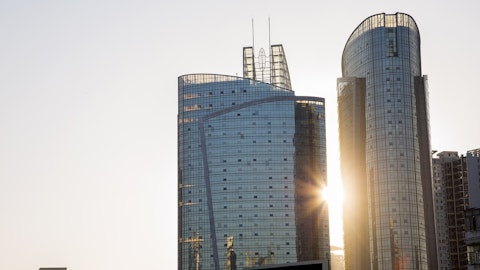Operator: Your next question comes from Tina Hou with Goldman Sachs.
Tina Hou: Congratulations on a very strong set of results. So I have two questions. The first one is as we are expanding our footprint into more and more cities, so how does management view the different type of customer need or demand in higher-tier city versus lower-tier city for both EREV product as well as BEV product? And how does Li Auto plan to adjust its marketing and sales strategy to better capture these differentiated demand? The second question is regarding your supply chain as well as cost reduction plan. So wondering if our supply chain bottleneck has been completely resolved at this point. And how do we — going forward, how do we best manage the supply chain to be able to fulfill our growing demand? Regard — related to that is, do we have any cost reduction plans and target over the next few years? And lastly, is over the next 2 years, what is our capacity plan as well as our CapEx guidance?
Liangjun Zou: Okay. Tina, this is James. I will take your first question. In the SUV market priced over CNY 300,000, our market share in our well-developed cities reached 50% in some of the cities, while our average market share across the whole market is less than 20%, which means there is plenty of room for our future growth. Overall, we will continue to focus on first-tier, new-tier, new first-tier and second-tier cities, aiming to increase our market share in these top-tier cities. Currently, we haven’t reached market saturation in first-tier and second-tier cities, and we will have huge growth potentials in those cities. In the CNY 300,000 and higher SUV market, the monthly sales of BBA are approximately 55,000 units in total.
And if we consider the second-tier premium and automotive brand, which include BBA and the other brand, and they are around 90,000 units, which means we have ample room to achieve our next stage of growth. Additionally, we have begun to accelerate our deployment in third-tier cities and speed up our store openings in certain key fourth-tier cities. And let me give you some numbers. As of today, we have more than 300 retail stores nationwide, among which they are more than — they have already more than 100 retail stores deployed in the third-tier and fourth-tier cities. According to our current progress, we expect to have more than 110 retail stores in third-tier and fourth-tier cities by end of this year. I hope I have answered your first question.
I will hand over to Mr. Ma for the second one.
Donghui Ma: First of all, regarding supply chain bottleneck, all of the issues that we have encountered before have all been successfully resolved. As most — regarding new models and our sales target for next year, we have made ample preparations across not only whole vehicle production capacity, but also parts supply. We have made medium- to long-term supply chain strategies to make sure that our supply chain is resilient over time. On cost reduction, our overall view is that OEMs should establish long term stable partnerships with our suppliers to achieve a mutually beneficial relationship for the two sides. For the short term, our short-term cost reduction measures will mostly be focused on business measures through platformization, volume aggregation and cost accounting to drive our procurement costs to a reasonable level.
For the medium to long term, we will look at the entire value chain from end to end to find ways to increase efficiency and reduce costs, including from product, R&D, technology and innovation to drive down cost. At the same time, we will also work with our suppliers to help them digitize and industrialize to increase the efficiency in the production process and reduce quality-related costs. In terms of overall vehicle production capacity, we have two manufacturing base in Beijing and Changzhou, three production lines in Changzhou dedicated to our EV models, L9, L8 and L7 as well as L6, which will be launched next year. In Beijing, there is one production line dedicated to our BEV products. Our production capacity is sufficient to meet the needs for sales and deliveries for the next 2 years.





